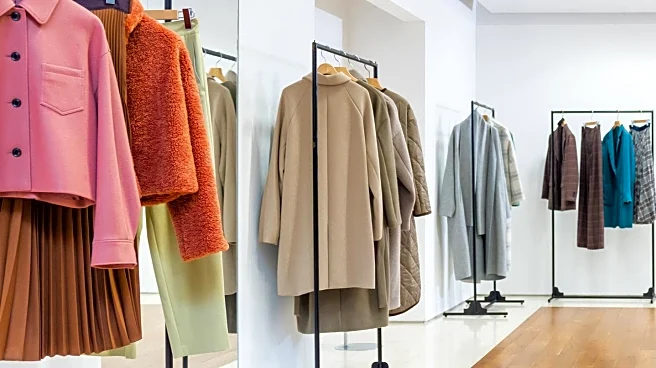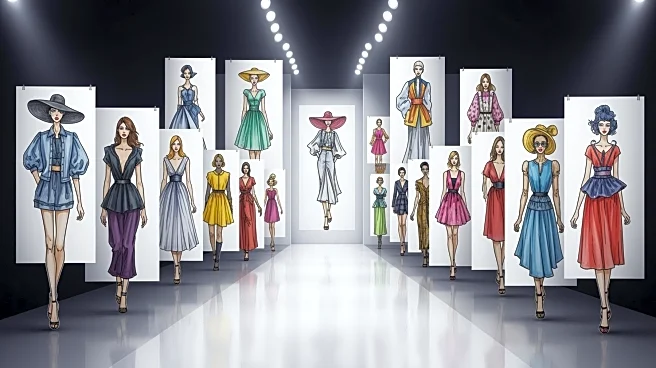What's Happening?
Eckhaus Latta, a fashion label founded by Mike Eckhaus and Zoe Latta, has been recognized for its unique approach to fashion design, which challenges traditional industry norms. Based in New York and Los
Angeles, the label is known for casting 'non-models' in its runway shows and creating collections that are largely unisex, promoting gender fluidity. Their work often reflects a post-collegiate, freelance lifestyle, resonating with the current socio-political climate marked by the rise of right-wing politics. Despite these influences, Eckhaus and Latta's design process is driven by personal intuition and connections, rather than conventional fashion industry standards.
Why It's Important?
Eckhaus Latta's approach is significant as it represents a shift in the fashion industry towards inclusivity and diversity. By casting 'non-models' and focusing on unisex designs, the label challenges traditional beauty standards and promotes a more inclusive representation of gender and body types. This approach not only broadens the appeal of their collections but also aligns with a growing societal demand for diversity and representation in media and fashion. As the industry grapples with these changes, Eckhaus Latta's success could inspire other designers to adopt similar practices, potentially leading to a more inclusive fashion landscape.
What's Next?
As Eckhaus Latta continues to gain recognition, it is likely that their influence will grow within the fashion industry. Their commitment to diversity and inclusivity may encourage other designers to rethink their casting and design practices. Additionally, as societal values continue to evolve, the demand for fashion that reflects these changes is expected to increase, potentially leading to broader industry shifts. Stakeholders in the fashion world, including brands, retailers, and consumers, may need to adapt to these changes to remain relevant and competitive.
Beyond the Headlines
Eckhaus Latta's work also highlights the intersection of fashion and contemporary art, as they often collaborate with artists and creatives. This blurring of boundaries between disciplines can lead to innovative designs and new ways of thinking about fashion. Furthermore, their focus on personal connections and intuitive design processes challenges the often impersonal nature of the fashion industry, emphasizing the importance of human relationships and creativity in design.











